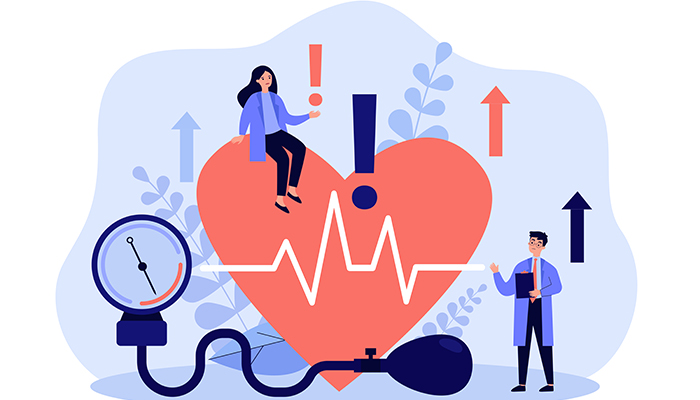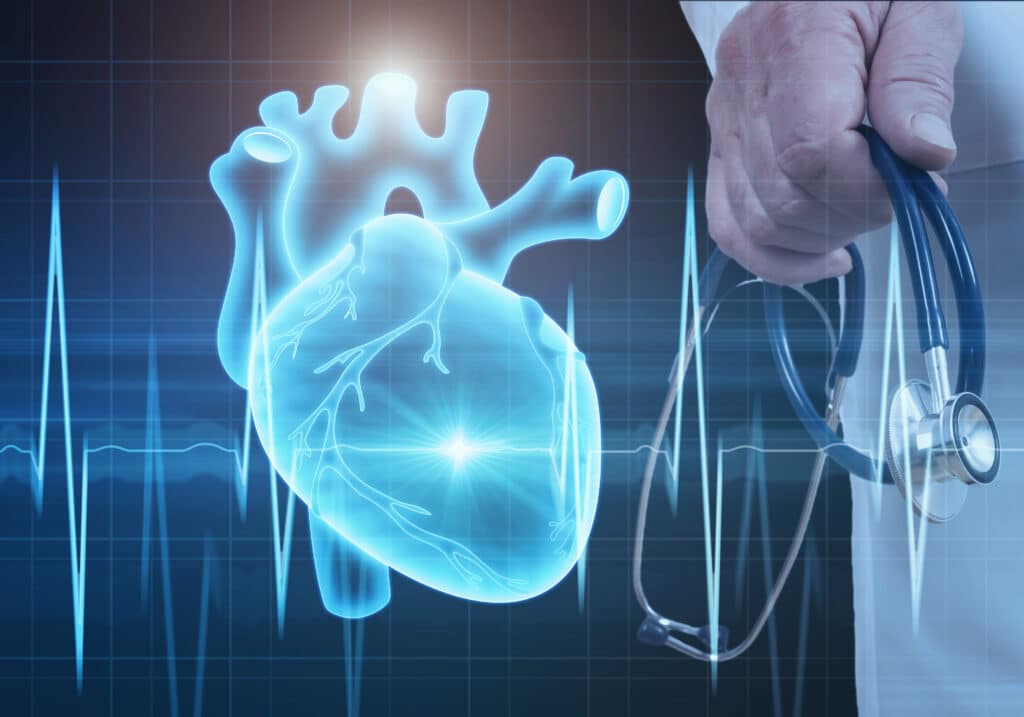Stay ahead of heart disease with Cardiology Jupiter’s approach
Stay ahead of heart disease with Cardiology Jupiter’s approach
Blog Article
Comprehending the Value of Cardiology in Modern Health Care Services
Cardiology plays an essential role in modern healthcare, particularly as cardiovascular disease continues to be the leading root cause of mortality worldwide. Breakthroughs in diagnostics and treatment have actually transformed person care, making it possible for earlier treatments and enhanced end results. The shift in the direction of preventative cardiology encourages people to handle their health and wellness proactively. As innovation continues to progress, the integration of ingenious services may even more redefine cardiology's influence on public health, triggering a more detailed exam of emerging patterns and their ramifications.
The Occurrence of Heart Condition and Its Effect On Public Wellness
Although heart illness stays the leading reason of death worldwide, its effect prolongs much past specific people to impact public health and wellness systems and economic situations. The high prevalence of heart disease places a significant strain on medical care sources, demanding raised funding for prevention, treatment, and recovery programs. Public wellness initiatives should attend to threat variables such as weight problems, smoking cigarettes, and less active way of livings, which contribute considerably to the increasing occurrence of heart conditions.Moreover, the economic burden connected with heart problem is enormous, encompassing not only direct medical expenses yet additionally indirect expenses associated with lost performance and early mortality. Neighborhoods face obstacles in taking care of these expenses, often leading to differences in healthcare access and end results. As the populace ages and lifestyle-related dangers remain to intensify, the necessity for reliable cardiology interventions becomes extremely important. Attending to heart disease is not just a matter of specific wellness yet additionally a critical public wellness top priority.
Breakthroughs in Cardiac Diagnostics and Imaging Techniques
Recent advancements in cardiac diagnostics and imaging methods have revolutionized the field of cardiology, improving the ability to keep track of and find cardiovascular disease. Strategies such as cardiac MRI, CT angiography, and echocardiography have actually ended up being progressively innovative, supplying in-depth photos of cardiac structures and functions. These methods allow for the early identification of conditions like coronary artery illness, heart failing, and valvular disorders.Moreover, advancements in non-invasive diagnostics, such as wearable modern technology and remote surveillance gadgets, have actually empowered people and doctor. These tools help with real-time tracking of heart rhythms and various other essential indicators, bring about prompt treatments. In addition, synthetic intelligence is being incorporated right into imaging analysis, improving accuracy and effectiveness in diagnosis.
Technologies in Therapy Options for Heart Conditions
Current advancements in cardiology have resulted in significant technologies in therapy options for heart disease. These include sophisticated surgical methods that boost procedural results and arising drugs that provide new opportunities for treatment. As the area progresses, these technologies play a vital function in improving patient treatment and results.
Advanced Surgical Techniques
Developments in medical methods have transformed the landscape of cardiology, using brand-new expect people with heart problems. Minimally intrusive procedures, such as catheter-based treatments, have actually considerably lowered healing times and medical facility stays. Strategies like robotic-assisted surgery boost precision, allowing doctors to browse intricate anatomical structures with greater accuracy. Advancements in imaging innovation facilitate real-time visualization throughout treatments, boosting results. Transcatheter aortic shutoff substitute (TAVR) exemplifies an advancement in treating aortic constriction, making it possible for valve replacement without open-heart surgery. In addition, hybrid strategies that incorporate catheter-based and medical methods offer customized solutions for various heart concerns. These innovative surgical techniques not only boost individual safety yet additionally broaden treatment options, underscoring the critical role of advancement in modern cardiology practices.
Arising Drugs and Therapies
As the landscape of cardiology continues to evolve, arising treatments and drugs play an essential role in boosting treatment options for heart problems. Advancements such as novel anticoagulants and progressed lipid-lowering agents have actually transformed the management of heart diseases, greatly decreasing client morbidity and death. Furthermore, the growth of gene treatments and regenerative medicine supplies appealing avenues for dealing with conditions previously deemed irreparable. Professional trials are constantly disclosing the effectiveness of these treatments, pushing the limits of traditional treatments. Moreover, the integration of electronic wellness innovations promotes customized medication, enabling tailored treatment plans based on hereditary and way of living elements. Jointly, these advancements highlight the vibrant nature of cardiology, boosting patient outcomes and redefining requirements of care in contemporary healthcare.
The Function of Preventive Cardiology in Individual Treatment
Preventative cardiology plays an important function in client treatment by concentrating on the recognition of risk factors that add to cardiovascular disease. Through way of life adjustment techniques and very early discovery techniques, doctor can successfully lower the occurrence of cardio occasions - Cardiology care. This proactive approach not only enhances client results however also promotes lasting wellness
Threat Variable Recognition
While cardio illness remain a leading cause of morbidity and death worldwide, reliable danger element identification functions as a keystone of preventative cardiology. Determining risk factors such as high blood pressure, family, diabetic issues, and hyperlipidemia background is necessary for early treatment. Health care professionals make use of various evaluating techniques to evaluate these aspects, enabling customized precautionary measures. Furthermore, understanding a person's lifestyle selections, such as smoking cigarettes and physical inactivity, additionally informs threat assessments. This detailed assessment makes it possible for clinicians to create individualized treatment plans intended at mitigating risks. By prioritizing threat factor identification, medical care systems can enhance person end results and minimize the overall concern of cardiovascular illness, ultimately contributing to boosted public health techniques and source appropriation.
Lifestyle Adjustment Strategies
A wide range of researches highlights the critical function of way of life adjustment approaches in reducing cardiovascular illness threat. These strategies encompass dietary modifications, raised exercise, smoking cessation, and weight administration. By embracing a heart-healthy diet plan abundant in fruits, veggies, entire grains, and lean healthy proteins, people can decrease cholesterol degrees and blood stress. Regular exercise strengthens the heart and improves overall cardiovascular health. Furthermore, stopping cigarette smoking considerably reduces the danger of cardiovascular disease and improves recuperation prices for those with status quo. Weight management further adds to cardio wellness by alleviating other threat variables such as diabetes and high blood pressure. Applying these way of life alters not only advertises specific health yet likewise functions as a cornerstone of preventive cardiology in person treatment.
Early Detection Methods
Lifestyle alterations substantially add to decreasing heart disease dangers, but they are most reliable when coupled with early discovery methods. Preventive cardiology stresses the relevance of identifying potential heart issues prior to they escalate right into major problems. Methods such as high blood pressure surveillance, cholesterol testing, and progressed imaging technologies like echocardiograms play critical duties in assessing cardio health. Biomarkers and hereditary screening likewise enhance the precision of early discovery, allowing for tailored precautionary techniques. Regular cardiac danger evaluations encourage medical care providers to intervene proactively, potentially protecting against cardiac arrest and strokes (Cardiology care). By incorporating these early discovery approaches into routine treatment, clients can profit from timely way of life interventions and targeted therapies, eventually enhancing and enhancing outcomes high quality of life
Integrating Innovation Into Cardiology Practices
As developments in technology continue to improve various fields, the integration of ingenious devices and systems right into cardiology techniques has actually become necessary for boosting client treatment and end results. Telemedicine systems allow cardiologists to monitor patients remotely, boosting access to care while minimizing the worry on health care facilities. Wearable tools, such as smartwatches, make it possible for continuous heart rate monitoring, informing both medical professionals and people to possible issues in real-time. In addition, expert system (AI) is being used to examine vast amounts of cardiac information, assisting in very early medical diagnosis and personalized therapy plans. Advanced imaging techniques, including 3D echocardiography, boost visualization of heart structures, resulting in more accurate interventions. Electronic health documents (EHRs) improve person details monitoring, making sure that cardiologists have prompt accessibility to vital information. With each other, these technical improvements read are changing cardiology, promoting aggressive administration and enhanced health end results for individuals with cardio conditions.
The Value of Client Education And Learning and Interaction
Patient education and interaction play an essential duty in the management of cardiovascular health and wellness. By gearing up people with knowledge about their problems, therapy options, and way of life adjustments, health care suppliers equip people to take an active role in their treatment. This positive method can bring about improved adherence to recommended drugs, nutritional modifications, and workout routines, eventually decreasing the danger of complications.Engagement likewise fosters a strong patient-provider connection, urging open communication and count on. When clients feel informed and involved, they are most likely to voice concerns and ask inquiries, which can result in better scientific outcomes. Additionally, academic sources, such as workshops or electronic platforms, can boost understanding and advertise self-management approaches. Overall, prioritizing individual education and involvement is necessary for boosting cardio health, improving high quality of life, and reducing health care prices associated with heart diseases.
Future Fads in Cardiology and Their Prospective Influence

Regularly Asked Questions
What Way Of Life Modifications Can Minimize Heart Problem Threat?
The existing question addresses way of life changes that can considerably decrease heart illness threat. Cardiology. Adopting a well balanced diet plan, engaging in routine physical activity, preserving a healthy and balanced weight, taking care of tension, and avoiding cigarette can notably enhance cardiovascular health
Exactly How Can I Identify Very Early Indicators of Heart Troubles?
Recognizing early indications of heart problems involves monitoring signs and symptoms such as upper body discomfort, lack of breath, tiredness, and uneven heartbeat. Timely awareness of these indicators can trigger needed clinical examination and treatment for better end results.
What Are the Distinctions In Between Cardiologists and Heart Surgeons?
The differences in between cardiologists and cardiac cosmetic surgeons hinge on their functions; cardiologists mainly handle and identify heart disease through non-invasive methods, while cardiac cosmetic surgeons execute procedures to fix structural heart concerns. Each plays a crucial, distinct function.

Just how Frequently Should I Get My Heart Wellness Checked?
The regularity of heart checkup differs based upon individual threat elements. Normally, adults should undertake assessments each to More hints two years, while those with status quo may call for more frequent analyses as suggested by health care experts.
What Duty Does Genes Play in Heart Problem Danger?
Genes substantially influences heart disease danger, with domestic patterns indicating inherited problems. Particular genes can predispose people to hypertension, cholesterol problems, and various other cardio troubles, highlighting the relevance of hereditary screening in examining heart health and wellness. Heart disease remains the leading cause of fatality around the world, its influence extends much beyond private clients to affect public health systems and economies. Public health efforts must deal with danger elements such as obesity, smoking, and less active way of lives, which contribute greatly to the increasing occurrence of heart conditions.Moreover, the financial concern associated with heart condition is tremendous, encompassing not just straight medical costs yet also indirect expenditures related to shed efficiency and premature other mortality. Precautionary cardiology plays a crucial duty in client care by concentrating on the identification of threat factors that add to heart illness. Fabricated intelligence (AI) and maker knowing are improving diagnostics and client surveillance, enabling early discovery of heart diseases. The differences in between cardiologists and cardiac specialists lie in their functions; cardiologists primarily identify and handle heart problems through non-invasive methods, while cardiac surgeons execute medical procedures to remedy structural heart issues.
Report this page